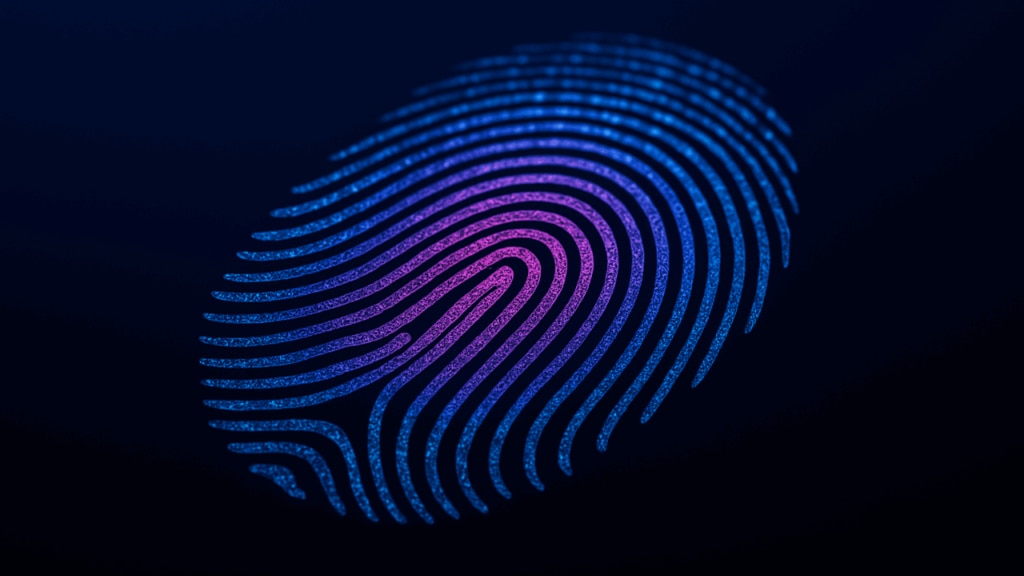Yusuf Tahir Abubakar, Student, Jamia Ahmadiyya International Ghana

In an age where identity is authenticated through fingerprints, facial recognition and biometric scans, the science of individuality has reached remarkable precision. Among all these markers, fingerprints stand out as one of the most reliable and unique identifiers of the human being. What is more astonishing is that this modern scientific fact was hinted at over 1,400 years ago in the Holy Quran – a revelation made long before fingerprint science had emerged.
The role of fingerprints in modern science
Biologically, fingerprints are formed during fetal development and remain unchanged throughout an individual’s life. They are formed by the interaction of genetic and environmental factors in the womb, resulting in patterns that are not just unique between individuals but also between identical twins. (Fingerprint, Palms and Soles; an Introduction to Dermatoglyphics [1963], pp. 104-105, www.pmc.ncbi.nlm.nih.gov)
Today, fingerprint identification plays a crucial role in forensic science, which attempts to solve crimes by matching prints found at crime scenes to suspects. It is also used in security systems, like biometric locks and devices to verify user identity. This also includes smartphones and personal gadgets for secure access.
The uniqueness and permanence of these prints make them the most trusted means of identification. According to the U.S. Department of Justice, fingerprint identification has no known case of duplication among billions of records worldwide. (The Fingerprint Sourcebook, www.ojp.gov)
The Quranic revelation: A divine detail
The Holy Quran addresses human creation and resurrection in vivid terms. One of the most compelling verses referring to fingerprints is found in Surah al-Qiyamah:
بَلَىٰ قَٰدِرِينَ عَلَىٰٓ أَن نُّسَوِّيَ بَنَانَهُۥ
“Yea, We have the power to restore his very finger-tips.” (Surah al-Qiyamah, Ch.75: V.5)
At a glance, this might seem like a description of re-creation after death. However, when analysed more deeply, it reveals a profound insight into human individuality and identity. After all, why would the Quran specifically mention fingertips? Why not just say body or bone? The answer becomes clearer when we consider what we now know about the uniqueness of fingerprints.
Historical context: A knowledge ahead of its time
When this verse was revealed in Arabia, there was no scientific understanding of fingerprints, much less of their utility in identifying individuals. The first scientific study of fingerprints as a means of identification did not begin until the late 19th century, with the work of Sir Francis Galton.
The fact that the Holy Quran mentions the reconstruction of fingertips – a body part now known to hold the secret of human identity – is not only scientifically relevant, but spiritually compelling.
Theological and scientific harmony
The mention of fingerprints in the Quran is not a coincidence. It is a reflection of the Quranic principle in terms of creation:
هُوَ ٱلَّذِي يُصَوِّرُكُمۡ فِي ٱلۡأَرۡحَامِ كَيۡفَ يَشَآءُ ۚ لَآ إِلَٰهَ إِلَّا هُوَ ٱلۡعَزِيزُ ٱلۡحَكِيمُ
“He it is Who fashions you in the wombs as He wills; there is no God but He, the Mighty, the Wise.” (Surah Aal-e-‘Imran, Ch.3: V.7)
This verse also tells us that humans are created with intentionality, individuality, and intricate design. The fingerprint is not just a physical imprint, but a spiritual sign of uniqueness, tied to one’s divine origin and accountability.
The fingerprint is more than a forensic tool – it is a divine signature etched into the human body, reminding us of our individuality, our origin, and our destiny. The Quran mentions and calls attention to this unique marker long before it was recognised by science. Ultimately, the fingertip becomes a symbol of divine precision, a proof of resurrection, and a reminder of the Creator’s intimate knowledge of His creation.

